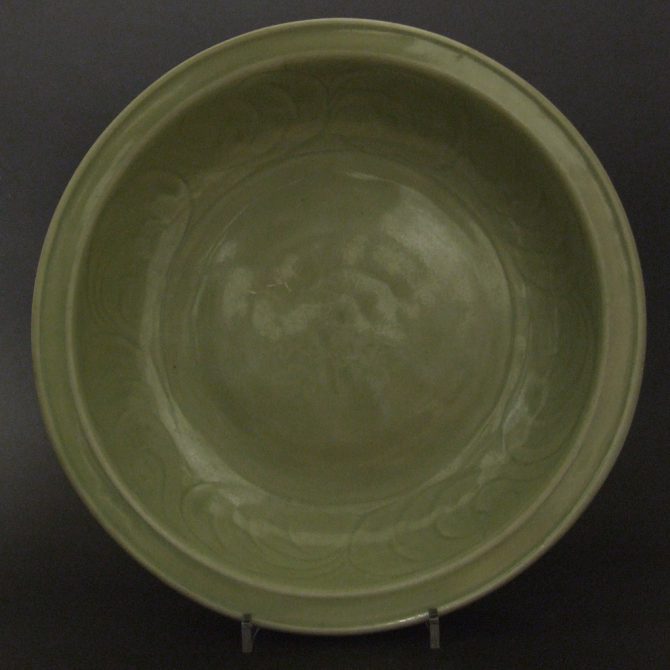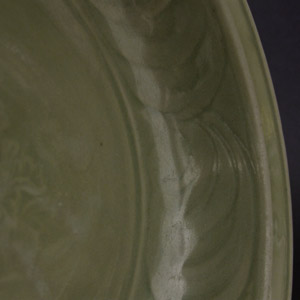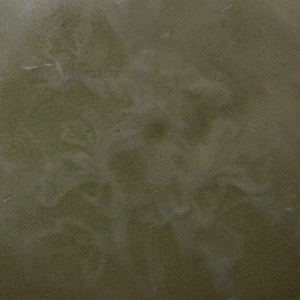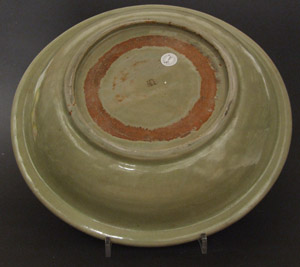
YUAN 1279 – 1368 Longquan Celadon Ware
A Large Yuan Celadon Ware Dish, Longquan Kilns, Zhejiang Province, Mid to Late Yuan Dynasty c.1300-1360. The Cavetto of this Celadon Dish is Carved with Stylised Scrolling Foliage and the Center is Moulded with Flowering Plants. The Base with a Drilled Collector`s Mark in the Form of Nine Holes Arranged in the Form of a Square, this Probably Represents Arabic Ownership at Some Point in it`s History.
SOLD
- Condition
- In good condition but with some light wear to the center.
- Size
- Diameter : 24.5 cm (13 1/2 inches)
- Provenance
- N/A
- Stock number
- 22656
- References
- For similar Yuan celadon dishes see : Chinese Ceramics in the Topkapi Saray Museum Istanbul, A Complete Catalogue, Volume 1, Yuan and Ming Dynasty Celadon Wares (Regina Krahl, Published in association with the Directorate of the Topkapi Saray Museum by Sotheby`s Publications 1986) pages 264 to 266, plate 105 probably being the closest comparison. drilled mark
Information
The Drilled Mark :
The drilled nine point mark is very similar to the mark found on two celadons and a 15th century blue and white dish in the Topkapi Saray Museum in Istanbul. According to the catalogue a similar mark appears on a celadon dish from the Cummings collection, this was formed in India see : Chinese Ceramics in the Topkapi Saray Museum Istanbul, A Complete Catalogue, Volume 1, Yuan and Ming Dynasty Celadon Wares (Regina Krahl, Published in association with the Directorate of the Topkapi Saray Museum by Sotheby`s Publications 1986) page 128 illustration 287.
Celadon Ware :
Celadon is a term used to describe several types of Chinese stoneware and porcelain, as well a ceramics from other countries, notably from Korea and Japan. The term is a imprecise one, applying to various types of green glazed ceramics, but not all ceramics with green glazes, there are several wares that have a green glaze that are not refereed to as celadon. For example Green Jun and Ge Ware. For this reason there has been a move to try to clarify the situation by using the term `Green Ware`. But for now Celadon is a more familiar and therefore useful term. The origins of the term Celadon are not clear, one theory is that the term first appeared in France in the 17th century and that it is named after the shepherd Celadon in Honoré d`Urfé`s French pastoral romance, L`Astrée (1627), who wore pale green ribbons. (D`Urfe, in turn, borrowed his character from Ovid`s Metamorphoses.) Another theory is that the term is a corruption of the name of Saladin, the Ayyubid Sultan, who in 1171 sent forty pieces of the ceramic to Nur ad-Din, Sultan of Syria. Yet a third theory is that the word derives from the Sanskrit sila and dhara, which mean "stone" and "green" respectively. Celadon ware originated in Zhejiang Province in the Eastern Han Dynasty, however green monochrome glazes can be found on stoneware much before that date. Zhejiang is were the famous Longquan Celadons were made but Celadon wares were also produced at Jiangsu, Hubei, Hunan and Jiangxi. The production of Celadon Ware required a reducing atmosphere of around 1300 degrees C., the colouring agent was a mixture of iron oxide and titanium. The glaze was applied very thickly, and was full of tiny bubbles which defuse the light giving the appearance of richness and softness.


